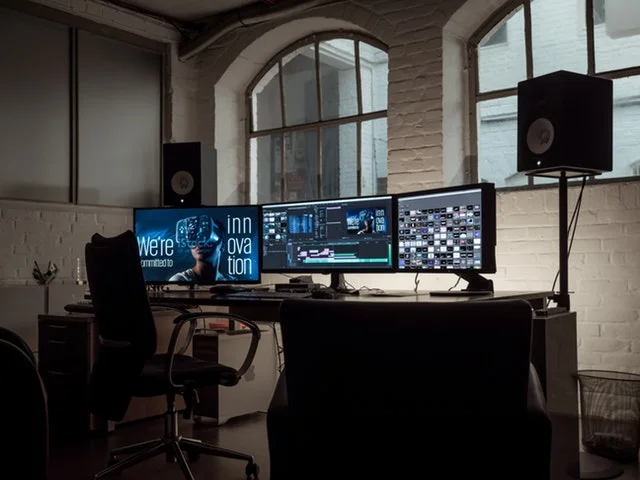The Intricacies Of Mixing Sound For 360º Video
One of today’s most popular video formats is the 360º video. This format, which has been used by a plethora of influencers on YouTube (the platform in which the format gained its popularity), is seldom used outside social media channels, which is why there’s not a lot of information on how to edit sound for what is also called spatialized video. If you happen to have a project of this nature in mind, in this article we’ve shared the details on the intricacies of mixing audio and sound for this kind of video format.
The Visuals Will Determine Your Approach
When it comes to 360ª video, we’re basically talking about videos that represent the projected images as a single flat still. Thus, it is normal for viewers to perceive ceilings and floors as curved figures. In fact, rounded visuals suggest that 360º videos are a geometrical representation of a cylinder, which causes the seams to be curved; however, these also get flattened when they’re run through a 360º video editor software. So, under these circumstances, how do you even start outlining a plan to properly add audio to such complicated format? To being with, just like any other video format, a 360º video can also be split into different quadrants.
Think of quadrants as small parts of the whole sequence, and while it may look that sometimes there are duplicated quadrants, in fact, it’s just a visual representation of one quadrant split in two different, but equally long, parts. If you were to print the whole sequence as a linear chain of events, you would be able to fold the impression into a cylinder shape and see how each quadrant connects with each other—as it’s supposed to be. Having said that, approach each quadrant as a mini video. If you could separate each quadrant and add audio quadrant by quadrant, a spatialization software could also take it from that point on.
Organize Accordingly
Now that you’ve split the video into different quadrants, you can start thinking about the specific audio for each section. For specific audio, you don’t necessarily need anything else aside from a mono stem simply because you just want to pinpoint the sound. Some sound designers start by adjusting their mix template from the traditional 5.1 set of routing down to simply mono for both sound effects and dialogues. Music and score is an entire different world, and let’s leave it for later. Unlike typical dialogue recording, where a traditional edit would have just one track for each main role or character, the spatialized video focuses on quadrants. This totally goes against a sound editor’s normal workflow.
The same approach goes for sound effects, although some of the effects often cross quadrants. If that were the case, the best choice would be to crossfade uniformly across each quadrant in an attempt to match the timing of what’s going on in the action sequences.
The Music
When creating and editing sound for 360º videos, as a sound editor you often come across several complications, and music is not the exception. Music presents two different challenges; however, the most important thing is to always keep the current spatialization in mind for both music creation and post mix. If musical sounds, especially those created by the people appearing in the projected images —like someone playing an instrument—, cross different quadrants, it’s important to define what sound you want to pinpoint and place the instrument on its own mono stem.
The Mix
Mixing is pretty much like any other mixing you’re probably familiar with. Once you have split the video into quadrants and have been working on its unfolded format, the mixing should aim towards playing a rather balanced short. Since we are talking about a 360º format, some sounds will certainly draw viewer attention to specific parts or quadrants. That suggests that, when leveling each sound, the ones that should be highlighted ought to be played a bit louder in the mix.
360º video format will certainly become more popular for other projects and platforms. Spatialization, for instance, can definitely differ from project to project, and the amount of audio and sounds crossing different quadrants and overlapping other sections of the project will be also different. As for the music, its treatment may entirely alter the way sound editors approach this kind of projects. The most recommendable thing is to plan beforehand and study the project so that you don’t fail in the early stages. Bear in mind that mixing for spatialized audio, or 360º video, requires way more tracks than a traditional project, and sometimes, if the video requires splitting dialogue, different musical tracks, different sound effects, the mix session will likely be of massive proportions —which is why, if you’re into this format, you’ve got to be sure you have a system powerful enough for the total track count.
*The images used on this post are taken from Pexels.com


